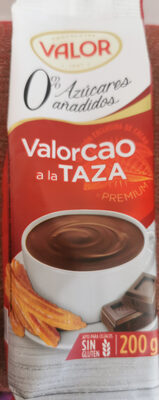ValorCao a la taza 0% - Valor - 200 g
This product page is not complete. You can help to complete it by editing it and adding more data from the photos we have, or by taking more photos using the app for Android or iPhone/iPad. Thank you!
×
Barra-kodea: 8410109113082 (EAN / EAN-13)
Izen arrunta: Preparado alimenticio en polvo a base de cacao con edulcorentes
Kopurua: 200 g
Markak: Valor
Kategoriak: en:Beverages, en:Breakfasts, en:Cocoa and its products, en:Cocoa and chocolate powders, en:Instant beverages, en:Chocolate powders
Etiketak, ziurtagiriak, sariak: en:No gluten
Origin of ingredients: Espainia, lt:España
Saltzen diren herrialdeak: Espainia
Matching with your preferences
Ingurumena
Carbon footprint
Ontziratzea
Transportation
Report a problem
Datuen iturria
Product added on by elcoco
Last edit of product page on by maylord.
Produktuaren orria -gatik editatua elcoco.51152e7dbf066148c20ba962e192e6fe, kiliweb, musarana, openfoodfacts-contributors, org-app-elcoco, pushka, roboto-app, thaialagata, yuka.VzdnQkU0c0lnYWtXeXZBMTNUenczZUpvK01DdURXcW9KYkUrSUE9PQ.








